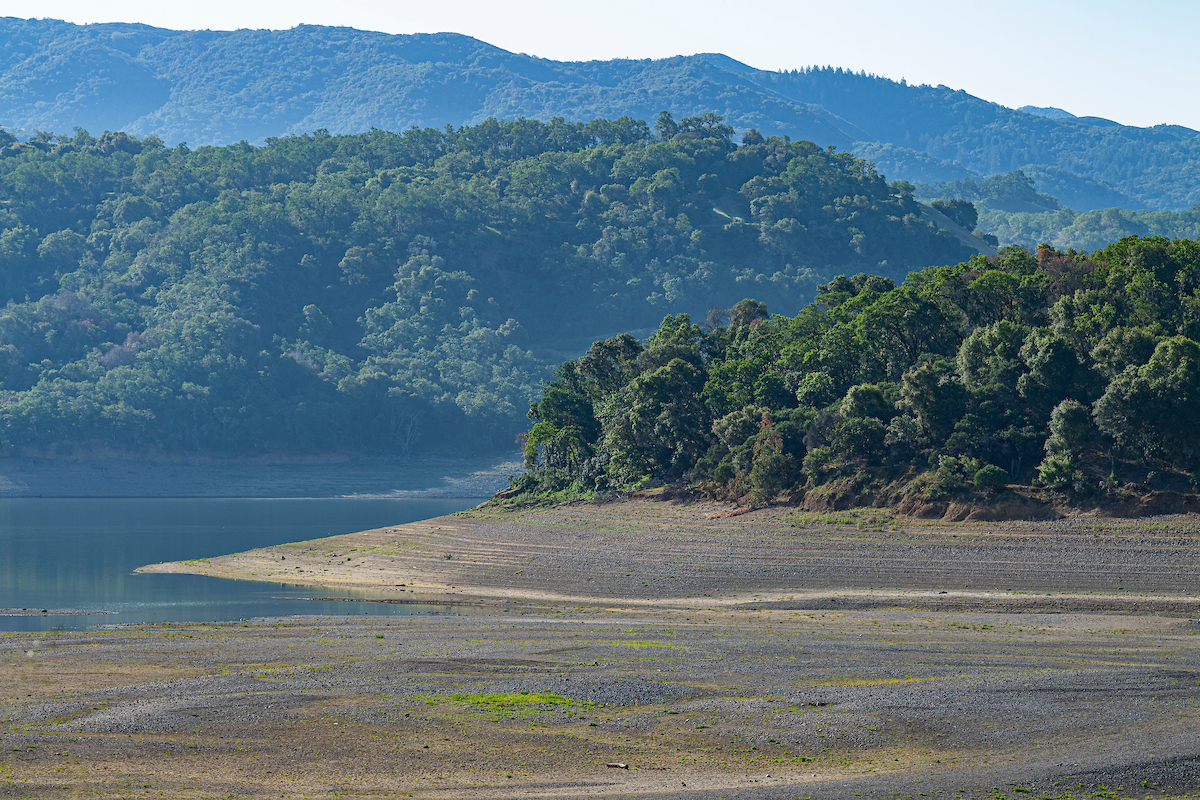Low flows are a threat to drinking water supplies, endangered fish
From the State Water Board:
 With drought conditions resulting in low flows in the Russian River and historically low water storage levels at Lake Mendocino, the State Water Resources Control Board today notified 930 junior water rights holders in the Upper Russian River basin that there is not enough water in the system and that diversions must be reduced immediately to safeguard the community’s drinking water availability later this year and next year.
With drought conditions resulting in low flows in the Russian River and historically low water storage levels at Lake Mendocino, the State Water Resources Control Board today notified 930 junior water rights holders in the Upper Russian River basin that there is not enough water in the system and that diversions must be reduced immediately to safeguard the community’s drinking water availability later this year and next year.
“Unless we immediately reduce diversions, there is a real risk of Lake Mendocino emptying by the end of this year,” warned Erik Ekdahl, deputy director for the State Water Board’s Division of Water Rights. “We need to implement the water rights system to protect supplies in case of another dry winter, which could transform the Russian River into a series of disconnected pools and restrict the availability of drinking water in the area.”
The state is responding aggressively to unprecedented dry conditions throughout the state, including the Russian River watershed. As of April 30, Lake Mendocino was at 43% of water supply capacity and Lake Sonoma was at 62% of water supply capacity, the lowest on record for this date. Rainfall in Santa Rosa and Ukiah in 2021 is less than 40 percent of long-term averages. This follows a dry year in 2020, which was then the third driest on record.
In April, Mendocino and Sonoma were the first counties Governor Gavin Newsom declared a regional drought emergency for, which now encompasses 41 counties. Today’s letters from the State Water Board tell water users in the Russian River watershed to reduce diversions before more regulatory curtailments authorized under the emergency proclamation occur to protect drinking water availability later this year and next year.
The Russian River watershed spans Sonoma and Mendocino Counties. Water stored in Lake Mendocino, a reservoir north of Ukiah, is released downstream to maintain flows in the Upper Russian River. This supplemental water protects multiple endangered fish species and supports a variety of municipal and agricultural uses. During dry conditions, water stored in the lake accounts for nearly all the water in the river. As drought persists, unchecked diversions by junior water right holders will require additional releases of stored water and risk draining the lake completely, resulting in loss of drinking water for those that rely on the lake releases.
Under California law, a water right holder can use surface water for beneficial purposes such as agriculture, municipal supply, recreation, and protection and enhancement of the environment. The age and type of right, be it appropriative or riparian, generally informs how restrictions apply when responding to drought conditions. In times of shortage, those with more junior rights may be required to stop diverting from rivers and streams before restrictions are imposed on more senior water right holders.
Today’s notice was distributed to all post-1914 appropriative water right holders in the Upper Russian River watershed, notifying them of insufficient supply for water rights with a priority date of 1949 and younger, and that by June 1, there will be insufficient supply for all post-1914 appropriative rights. Those who continue diverting after receiving notices can be subject to enforcement actions, including fines up to $1,000 per day.
The notices sent today are likely to remain in effect until winter rains restore flows. Given that it is still early in the dry season, conditions are likely to worsen and additional actions may be needed. The board encouraged diverters to collaborate with communities to adapt to water shortages, conserve water, prevent impacts to other legal right users, and benefit fish and wildlife.
State Water Board staff will closely monitor conditions and update junior right holders if flows improve and water becomes available.
With historic drought conditions advancing rapidly — compounded by the impacts still being felt from the 2012-2016 drought – the state is moving urgently to address acute water supply shortfalls while comprehensively building our water resilience as drought conditions persist, potentially into a third year. The State Water Board website contains further information about the notices of unavailability and drought conditions.
The State Water Board’s mission is to preserve, enhance, and restore the quality of California’s water resources and drinking water for the protection of the environment, public health, and all beneficial uses, and to ensure proper water resource allocation and efficient use for current and future generations.



